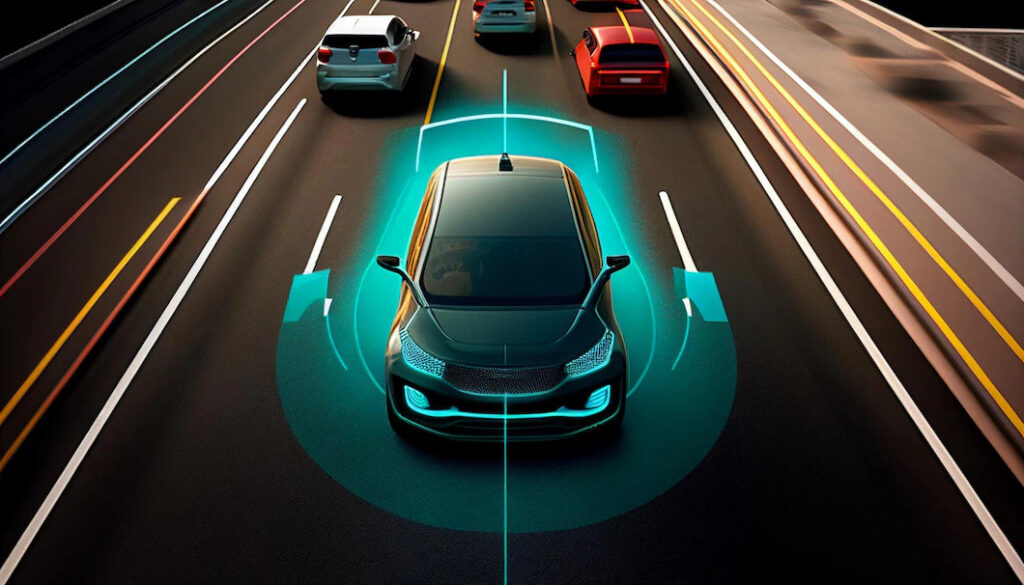Riding In The Future: A Look At Level 4 Autonomous Cars
by Barsha Bhattacharya Automotive Published on: 18 August 2023 Last Updated on: 05 May 2025

Imagine a world where cars effortlessly navigate the streets, freeing up our time and revolutionizing how we travel.
Welcome to the era of level 4 autonomous cars, where artificial intelligence takes the wheel and transforms our daily commutes into a seamless and immersive experience.
In this futuristic landscape, passengers and drivers can sit back, relax, and enjoy the ride as their vehicles handle every aspect of driving with unparalleled precision and safety.
So let us delve into the exciting world of autonomous vehicles and explore how they are reshaping the future of transportation.
5 Features That Define The Level 4 Autonomous Cars

Autonomous cars have revolutionized the way we envision transportation, and at the forefront of this revolutionary technology are level 4 autonomous cars.
These vehicles represent the pinnacle of self-driving capabilities, offering a range of advanced features that set them apart from their predecessors.
From their ability to navigate complex roadways without human intervention to their sophisticated sensor systems, level 4 autonomous cars are truly pushing the boundaries of what is possible in the world of automotive innovation.
Let us explore the five key features of advanced autonomous driving technology, highlighting remarkable advancements in cutting-edge vehicles—
1. Advanced Sensors
One key feature that defines level 4 autonomous cars is advanced sensors.
These sensors are equipped to detect and interpret the surrounding environment, allowing the vehicle to navigate and make decisions without human intervention.
Examples of advanced sensors include LiDAR (Light Detection and Ranging) systems, which use laser technology to create detailed 3D maps of the car’s surroundings, and radar systems that can detect objects and measure their distance and velocity.
These sensors work in conjunction with other technologies like cameras and GPS to provide a comprehensive understanding of the car’s surroundings.
2. High-Definition Mapping
High-definition mapping is crucial in enabling autonomous vehicles to navigate safely and make informed decisions.
Unlike traditional mapping systems, high-definition maps provide extremely precise and detailed environmental information, including road geometry, lane markings, traffic signs, and even curb heights.
The autonomous vehicle uses real-time sensor data to continuously update high-definition maps, providing accurate information on road conditions, construction zones, and potential obstacles.
This enables the vehicle to determine potential hazards and obstacles accurately.
3. Artificial Inteligence
In order for autonomous vehicles to make wise decisions and adjust to shifting road conditions, artificial intelligence is essential.
The vehicle’s AI system analyzes data from various sensors, such as cameras, lidar, and radar, to perceive its surroundings and understand the behavior of other cars and pedestrians.
By constantly learning from its experiences, the AI system becomes more adept at predicting and responding to different scenarios on the road.
This helps ensure safe navigation and efficient decision-making for the autonomous vehicle.
4. Redundancy Systems
Another important aspect of autonomous vehicles is the incorporation of redundancy systems.
These systems are put in place to ensure the safety and reliability of the vehicle, even in the event of a failure or malfunction.
Redundancy systems involve having multiple sensors and components that perform similar functions, so if one fails, another can take over seamlessly.
For example, if a camera sensor stops working, the vehicle can still rely on lidar or radar sensors to perceive its surroundings and make informed decisions.
Redundancy systems also include backup power sources and communication networks to ensure continuous operation and connectivity.
By implementing redundancy systems, autonomous vehicles can greatly minimize the risk of accidents and enhance their overall performance and reliability on the road.
5. Limited Driver Intervention
Limited driver intervention refers to the ability of autonomous vehicles to operate without constant input or control from a human driver.
With advanced technology and sophisticated algorithms, these vehicles can navigate and make decisions independently, reducing the need for human intervention.
This is achieved through various sensors, such as cameras, lidar, and radar, that enable the vehicle to detect obstacles, traffic signs, and other vehicles on the road.
The vehicle’s computer system then processes this information and determines the appropriate actions, such as accelerating, braking, or changing lanes.
By minimizing the need for human intervention, autonomous vehicles can provide a more comfortable and convenient driving experience while also reducing the potential for human error on the road.
Looking At The AV Market
The global autonomous vehicle market is expected to reach $556.67 billion by 2026, with a 39.47% CAGR from 2019 to 2026.
Level 4 autonomous cars are increasingly popular, capable of performing all driving tasks without human intervention.
This strong demand and positive reception for autonomous vehicles, including level 4 technology, is expected to grow.
Recent advancements in autonomous vehicle technology have also contributed to the growing acceptance of level 4 autonomous cars.
Companies like Tesla, Waymo (Alphabet), and Cruise (General Motors) have significantly progressed in developing and testing self-driving cars.
The Sustainability Note Of Level 4 Autonomous Cars
The sustainability quotient of level 4 autonomous cars is incredibly high.
According to studies, autonomous driving technologies could reduce fuel consumption and carbon emissions by up to 20%.
Additionally, autonomous cars can optimize traffic flow, reducing congestion and minimizing fuel consumption.
These vehicles can also be designed with lightweight materials and advanced energy management systems, improving energy efficiency.
Overall, level 4 autonomous cars hold promise in significantly reducing the environmental impacts associated with transportation.
Read Also:



































































































